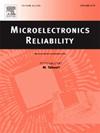Investigation of humidity protection behavior of protective coatings on PCB with components
IF 1.6
4区 工程技术
Q3 ENGINEERING, ELECTRICAL & ELECTRONIC
引用次数: 0
Abstract
In this work, humidity performance of two types of protective coatings was investigated on a PCB with typical components with the aim of understanding synergistic effect of coating/process and board design. Coatings are 2-component Polyurethane (PU, mixture of Ether and Ester polyols) and ultra-thin Plasma enhanced chemical vapor deposition (PECVD) coating. Test PCB used for testing consisted of components such as a Quad flat no‑lead package (QFN), Ball grid array (BGA), and Pin connector. The performance of coated PCB was evaluated in terms of process-induced no-clean flux residues introduced during reflow and wave soldering of components. The test profile used was constant humidity (95 %) condition with temperature cycling (40°C–65°C). Moisture permeation through the coatings and its effects on component performance was evaluated using electrochemical AC impedance and subsequent DC potentiostatic measurement under climatic exposure. Coating-PCB-Components interfaces were analyzed using Scanning electron microscopy (SEM) and Energy dispersive spectroscopy (EDS) before and after testing. The study revealed that the PCBA cleanliness after a soldering process is a major factor determining the coating performance, component geometrical shape and standoff height affected uniformity of coating and under-filling affecting humidity performance.
含元件PCB板防护涂层的防潮性能研究
在本工作中,研究了两种类型的保护涂层在具有典型组件的PCB上的湿度性能,目的是了解涂层/工艺和电路板设计的协同效应。涂料是双组分聚氨酯(PU,醚和酯多元醇的混合物)和超薄等离子体增强化学气相沉积(PECVD)涂层。用于测试的测试PCB由四面扁平无引线封装(QFN)、球栅阵列(BGA)和引脚连接器等组件组成。根据元件回流焊和波峰焊过程中引入的未清洁焊剂残留对涂覆PCB板的性能进行了评价。试验剖面采用恒定湿度(95%)条件,温度循环(40°C - 65°C)。在气候条件下,通过电化学交流阻抗和随后的直流恒电位测量来评估涂层中的水分渗透及其对组件性能的影响。采用扫描电镜(SEM)和能谱仪(EDS)对测试前后的涂层- pcb -组件界面进行了分析。研究表明,焊接后的PCBA清洁度是决定镀膜性能的主要因素,元件几何形状和隔层高度影响镀膜均匀性,欠填充影响湿度性能。
本文章由计算机程序翻译,如有差异,请以英文原文为准。
求助全文
约1分钟内获得全文
求助全文
来源期刊

Microelectronics Reliability
工程技术-工程:电子与电气
CiteScore
3.30
自引率
12.50%
发文量
342
审稿时长
68 days
期刊介绍:
Microelectronics Reliability, is dedicated to disseminating the latest research results and related information on the reliability of microelectronic devices, circuits and systems, from materials, process and manufacturing, to design, testing and operation. The coverage of the journal includes the following topics: measurement, understanding and analysis; evaluation and prediction; modelling and simulation; methodologies and mitigation. Papers which combine reliability with other important areas of microelectronics engineering, such as design, fabrication, integration, testing, and field operation will also be welcome, and practical papers reporting case studies in the field and specific application domains are particularly encouraged.
Most accepted papers will be published as Research Papers, describing significant advances and completed work. Papers reviewing important developing topics of general interest may be accepted for publication as Review Papers. Urgent communications of a more preliminary nature and short reports on completed practical work of current interest may be considered for publication as Research Notes. All contributions are subject to peer review by leading experts in the field.
 求助内容:
求助内容: 应助结果提醒方式:
应助结果提醒方式:


